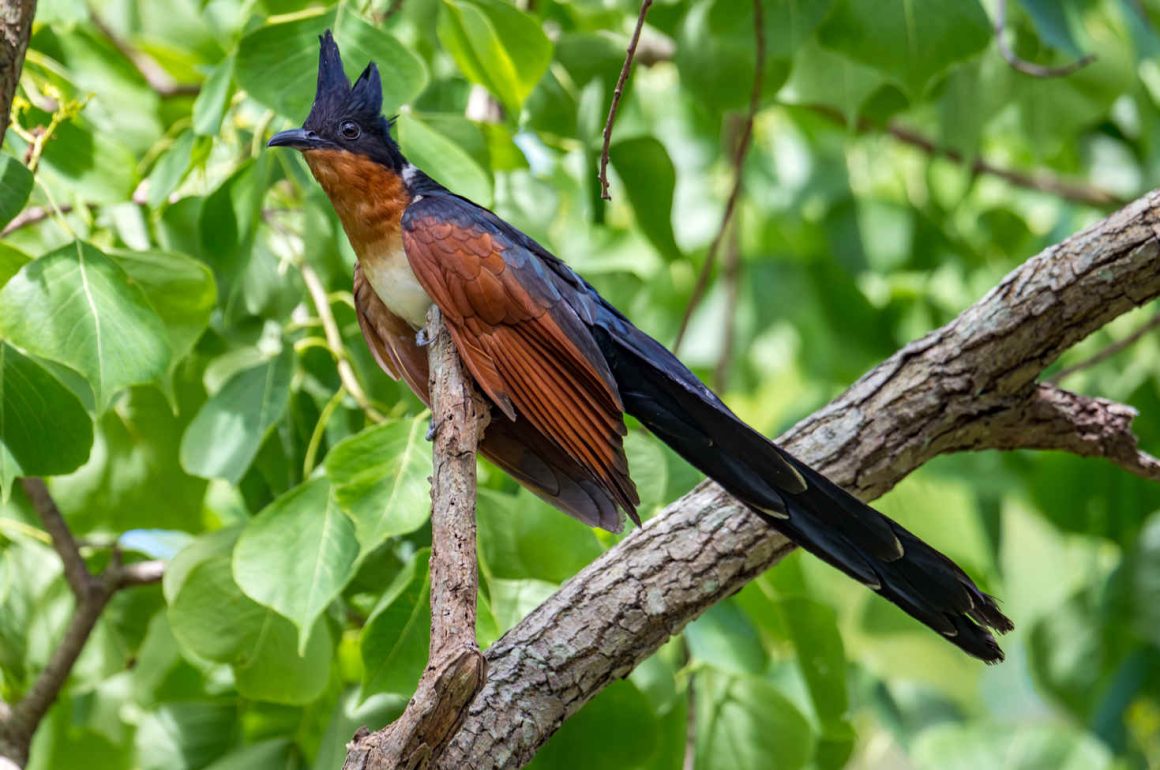
This is a species I feel compelled to present in the Species Spotlight series – not because there is so much interesting research on it (there isn’t), but because I got some nice photos of it.
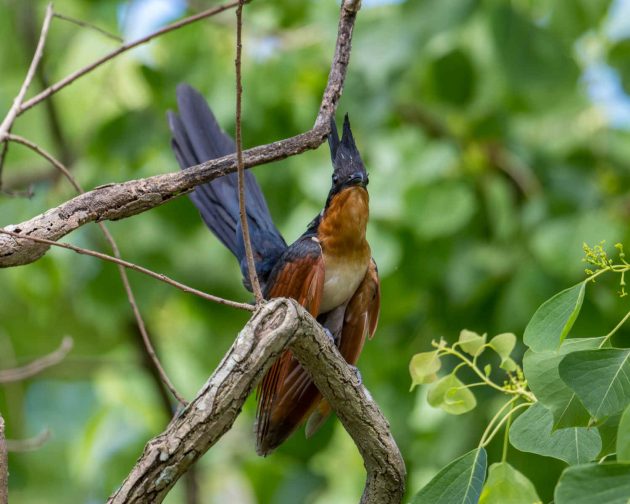
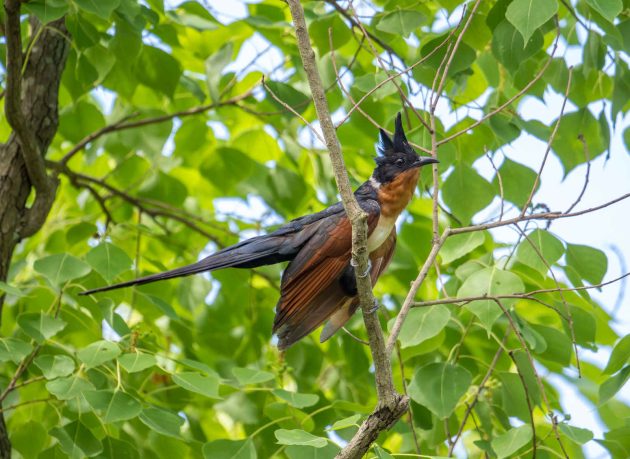
Unfortunately, not even the species name gives me much to write about. “Chestnut-winged” is as straightforward as it gets, and the scientific name Clamator coromandus only indicates that the bird is associated with the Coromandel Coast in south-eastern India (though that is slightly misleading, as it is only wintering there, not breeding).
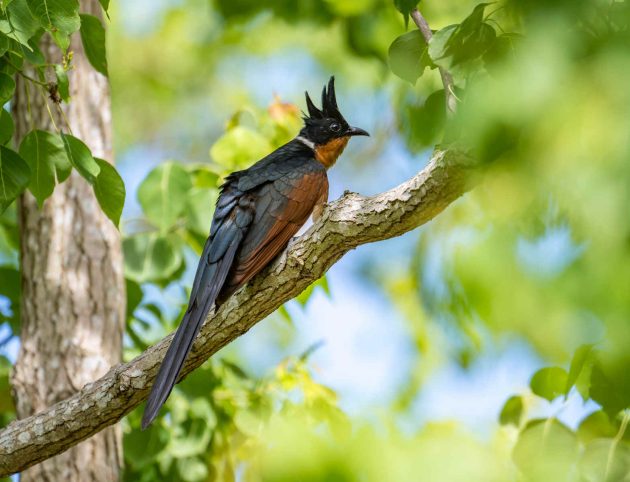
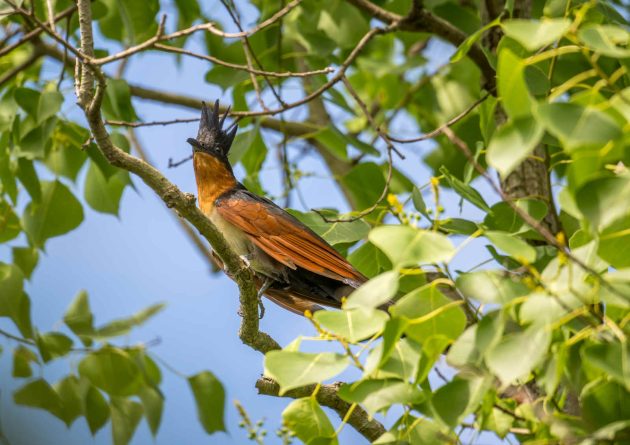
“Clamator” (“shouter”) is a tiny bit more interesting, but not by much – though it was the call of the cuckoo that made me find it.
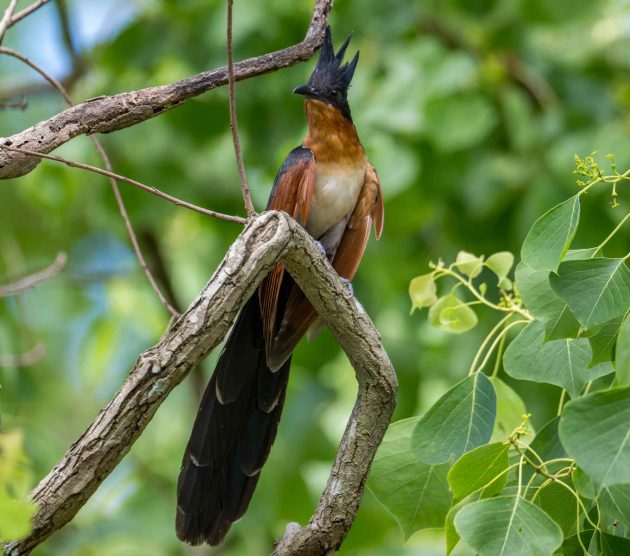
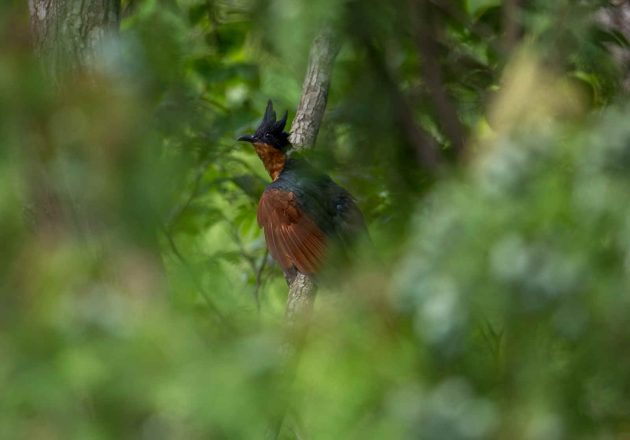
At least the characterization of the complete mitochondrial genome of the Chestnut-winged Cuckoo provides some broader information. Apparently, there is a general genetic difference between brood-parasitic and non-brood-parasitic cuckoo species. Presumably, that difference makes brood parasites puke when they think of having to raise their chicks.
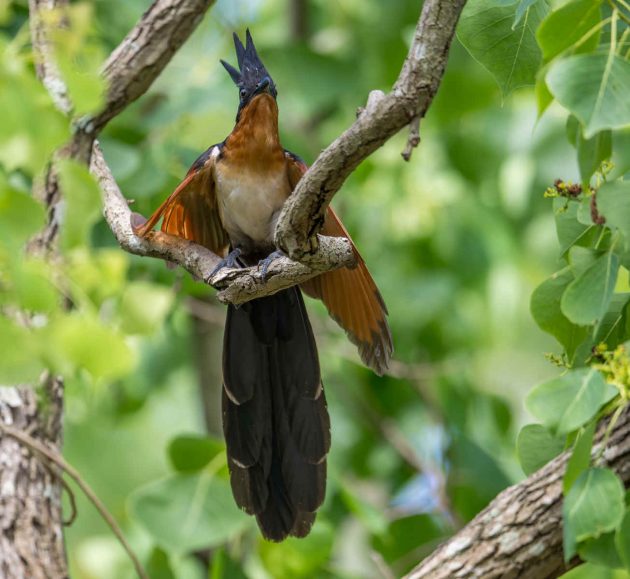
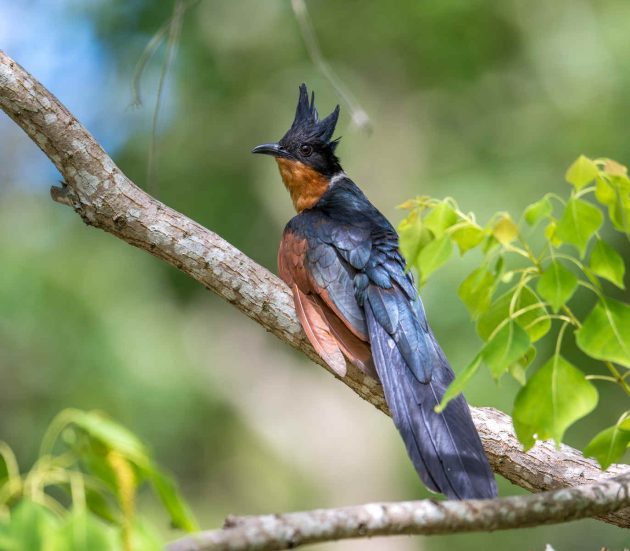
In one study comparing the vocal activity of cuckoo species in an East China forest, Chestnut-winged Cuckoos were the only species that had two peaks in vocal activity, one in early June and one in early July. The authors hypothesize that the males might call late in the season to attract additional females (they are polygamous).
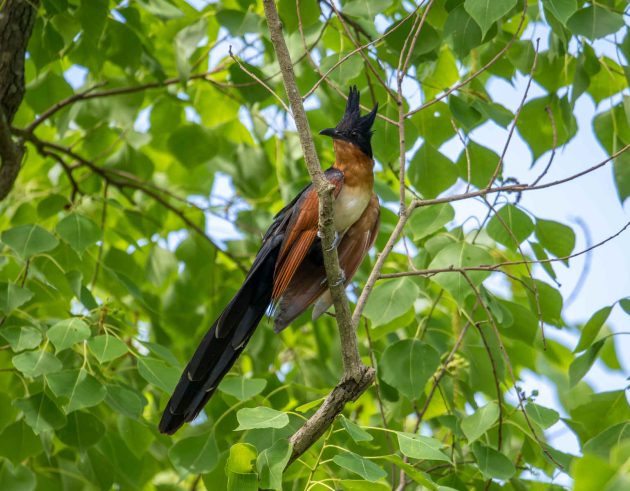
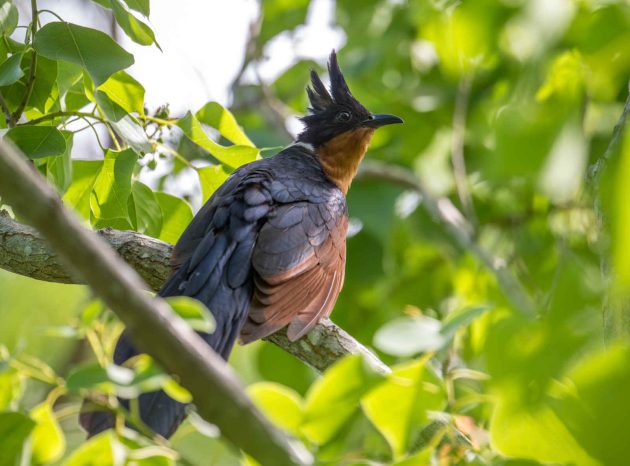
Another report describes an unusual observation in southwest China: In a nest of a Greater Necklaced Laughingthrush with three laughingthrush nestlings and two nestlings of the Chestnut-winged Cuckoo, feeding was done not only by the adult laughingthrush but also by a male White-browed Shrike-Babbler. Interestingly, after the cuckoo nestlings fledge, the shrike-babbler seems to have stopped feeding the laughingthrushes. This may indicate that the shrike-babbler was particularly sensitive to the begging calls of the cuckoo nestlings.
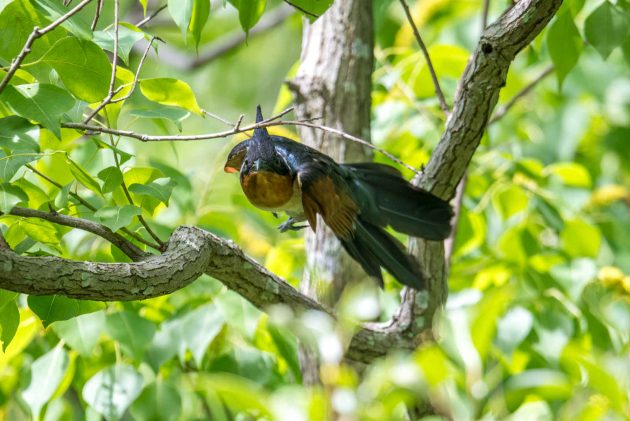
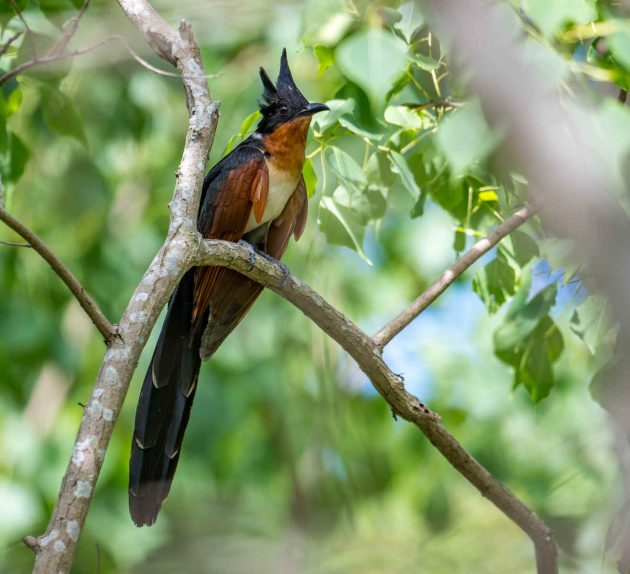
Generally, the Chestnut-winged Cuckoo has a wide range of host species, including several laughingthrushes as well as Oriental Magpie-robin and Long-tailed Shrike. As the park where I saw the bird has a largish population of Masked Laughingthrushes and Hwameis, I suspect those to be the local host species, though the other two mentioned above are definitely also present.
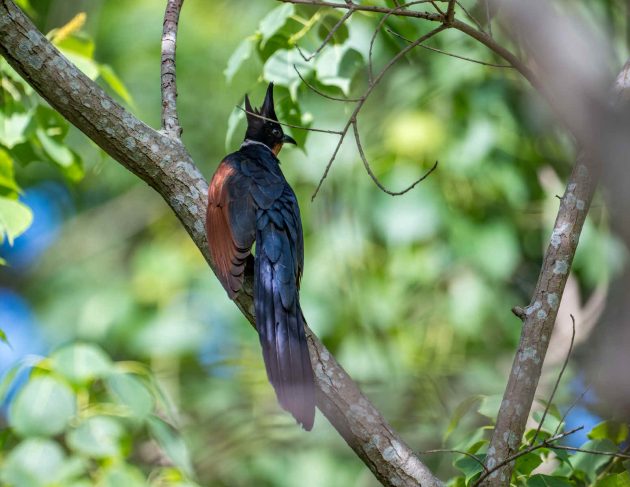


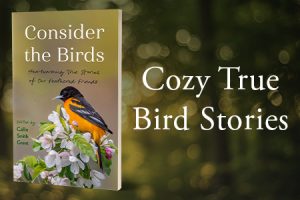




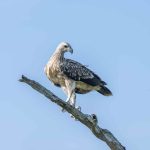
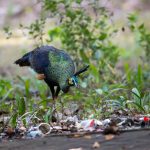
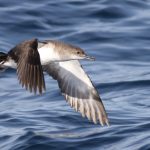
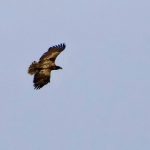

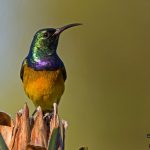
This is the only Clamator species I haven’t seen yet and I now know where to go… Some really nice pictures – I recognise the Clamator-esque posture and behaviour despite not having seen this species.
Wonderful photographs. What a ham! I’m used to cuckoos being skulkers.
Wonderful photos indeed!
That is a pretty amazing looking bird!